Valencia’s Las Fallas Festival: What Makes It a Must-See?
Valencia, Spain, celebrates Las Fallas every March as one of its thrilling and grand festivals. Though less known in the United States, it is one of the most significant festivals in the world. Hundreds of neighborhood associations from all over the city throughout the year organize, design, and build these large monuments. This results in the production of beautiful art pieces which manifest the creativity of the Valencian people.
From March 16 to 19, these monuments are open to the public and become major attractions in Valencia. In this district, people can watch colorful performances, admire masterpieces of art, and examine the beauties of culture and festivity.
The last day of the festival involves putting up and burning fires to all the constructed towering structures. This is theorized to represent rebirth and starting the cycle from scratch for the following year.
However, the essence of Las Fallas is not in the show it is in the atmosphere of the non-stop celebrations. The street food vendors offering delicious local cuisine make the spirit of Fallas even brighter. The city gets more alive during these four days because you can see fireworks in the sky every night.
History and Origins of Valencia’s Las Fallas Festival
The origin of the Las Fallas festival in Valencia comes from an old carpenter’s tradition. This marks the arrival of spring on March 19. Carpenters would burn leftover pieces of wood, called parots, which they used to prop up their lights during winter. Over time, this bonfire ritual included old belongings and rags which form a wooden structure resembling a human figure, known as ninots.
The Fallas celebrations have evolved into elaborate, temporary works of art that cost millions of euros. In medieval times, carpenters and woodworkers in Valencia gathered scraps, starting the tradition of burning them on St. Joseph’s Day.
By the 1700s, these wooden boards were dressed in clothes and transformed into satirical dolls and puppets burned at night. Over centuries, this event evolved into a massive 4-day celebration with a 24/7 party atmosphere and hundreds of monuments.
UNESCO recognized the Festival of Las Fallas as one of the intangible cultural heritages of humanity in 2016. Many neighbourhood associations in Valencia finance and organize the event, with each constructing its own falla.
First, they decide their general celebration theme and then look for talented artists as falleros for the artistry. Most artists, or falleros, have a distinct technique in their work that makes it recognizable from years ago.
The process begins with a draft of the concept art. This is followed by building the model and then constructing the actual structure. Each falla starts with a wooden scaffold, and individual parts are created from plaster molds filled with inflammable material and later painted. In earlier days, various materials included timber, cartons, and paper were used. Now they are replaced with materials like styrofoam, resins, and fiberglass.
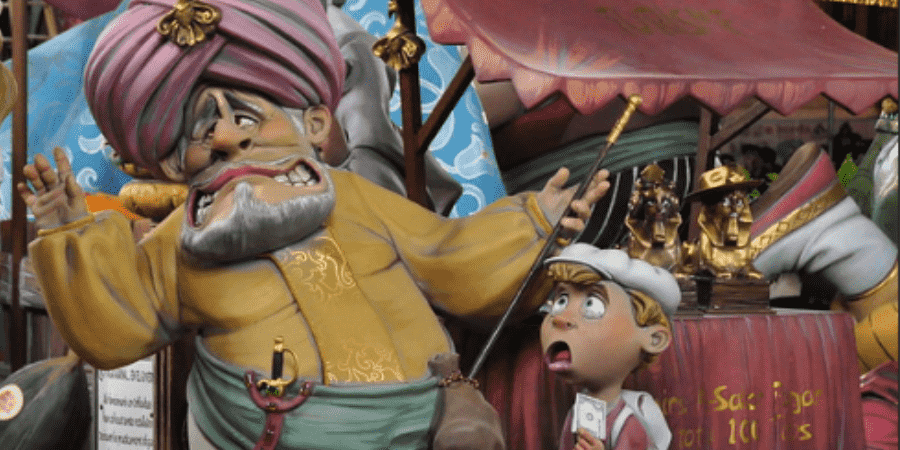
These newer materials enable the creation of lighter parts and taller structures. However, their flexible nature has raised environmental concerns. When burned, they emit black smoke that hampers the view of the falla during the burning ceremony, known as La cremà. It produces heavy black smoke which obscures the artwork and reduces the structure to the wooden framework.
When and Where is Valencia’s Las Fallas Festival Celebrated?
Las Fallas is a festival held in March, with the biggest celebrations starting on March 15th and lasting until the 19th. Although a lot happens within five days. It has an annual celebration vibe with preparation and smaller meetings have been happening throughout March. During the festival, the entire city of Valencia in Spain participates, with each area organizing its performances. This makes it a citywide affair.
Key Dates During Valencia’s Las Fallas Festival
- March 1-19: Daily events featuring La Mascletà, a mid-day firecracker display at 2:00 pm in the Plaza del Ayuntamiento. It is known for its rhythmic explosions, this thrilling sound experience draws large crowds every day.
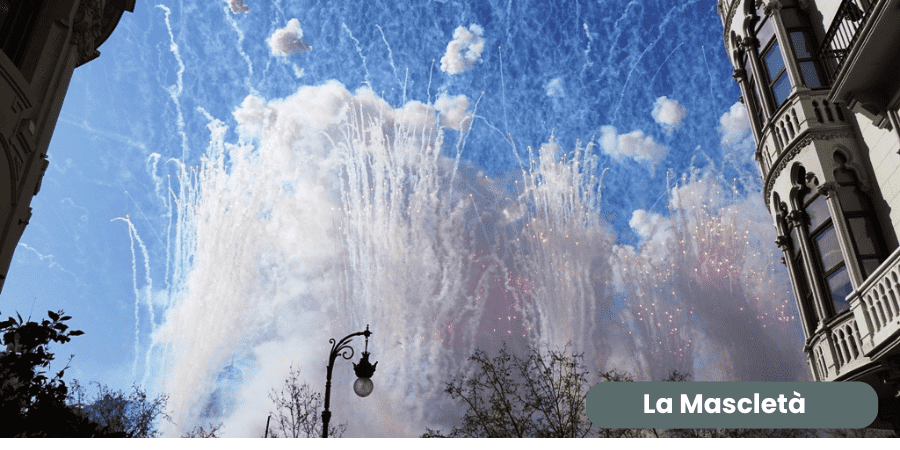
- March 15-16: La Plantà (The Planting): Official setup of large and intricate sculptures called “fallas” across the city which showcase local artistry and creativity.
- March 17-18: La Ofrenda (The Offering of Flowers): Participants dressed in traditional attire offer flowers to the Virgin Mary at the Plaza de la Virgen. This creates a spectacular tapestry of flowers.
- March 19: La Cremà (The Burning): The festival’s grand finale, where all the fallas sculptures are set ablaze in a stunning spectacle. This marks the official end of the festival.
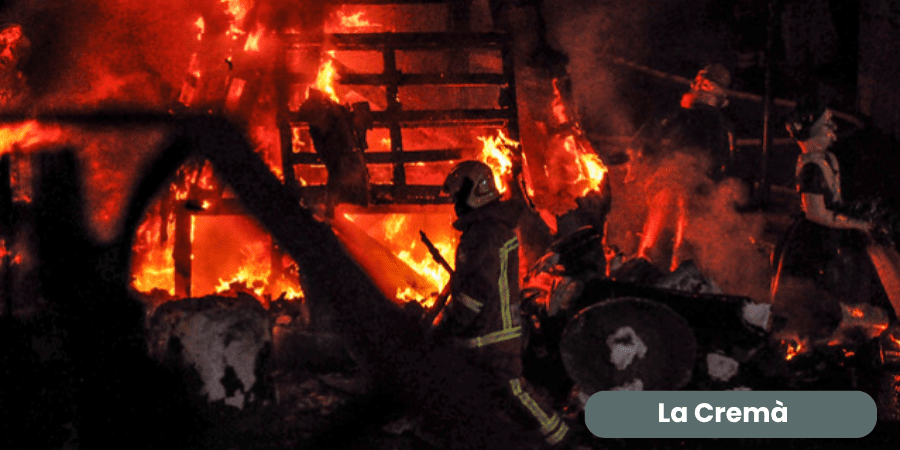
Main Event Locations in Valencia
Las Fallas is a wide festival encompassing the whole territory of Valencia, and each district has its features and attractions.
- The Plaza del Ayuntamiento, Valencia’s central square, serves as the heart of the celebrations. This festival host the daily Mascletà displays at 2:00 pm. This area turns into a main focus during La Cremà, when the city’s leading falla is ignited.
- La Ofrenda, located at Plaza de la Virgen, is a great placeto observe people making a beautiful floral offering to the Virgin Mary. The atmosphere is very colorful and emotional.
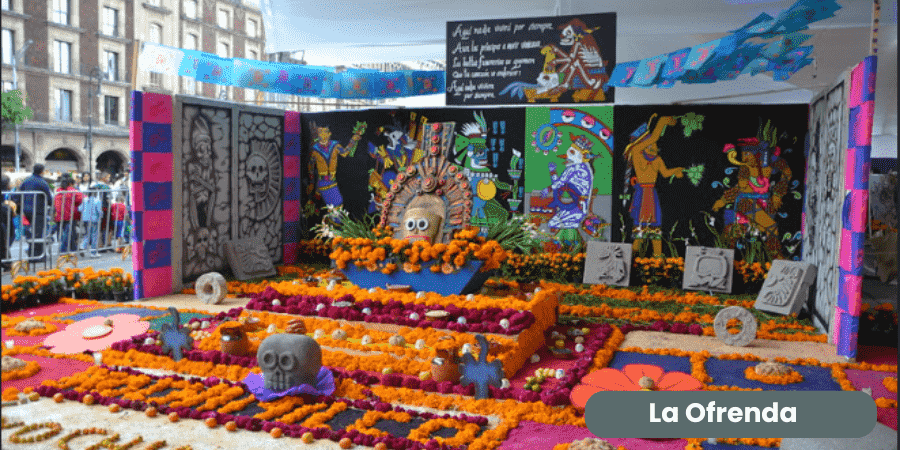
- Open precincts like Ruzafa and El Carmen are well-known as creative precincts articulating unique artistic identities. Every area builds its falla, and these districts are pivotal places to visit during this event. Visiting these barrios offers a great chance to explore various styles and the quality of work throughout the city. The dynamics of different parts in these neighborhoods depict the spirit and culture associated with Las Fallas.
Popular Viewing Spots for Fireworks
- The Turia Riverbed, which is no more a riverbed, is said to be the best place to watch the fireworks. This show happens during Las Fallas. It has a large area of open area, ideal for spectacular performances, especially during, La Nit del Foc (The Night of Fire). This festival itself is celebrated to mark one of the yearly festivities. At the riverbed, tension fills the air as everyone anxiously waits for the sky to burst with fireworks.
- The Plaza del Ayuntamiento hosts stunning fireworks every evening which attracts thousands of people during the festivity. As one of Valencia’s most colorful and lively spots, this place showcases the power and excitement of the celebrations. The fireworks and light show capture the essence of Las Fallas, with fireworks serving as the grand finale.
Unique Traditions and Customs of Valencia’s Las Fallas Festival
Las Fallas in Valencia is a celebration filled with fire and a deep sense of tradition. The festival’s highlight is La plantà, where falleros and falleras proudly showcase their works, the fallas massive sculptures that often incorporate satire and humor.
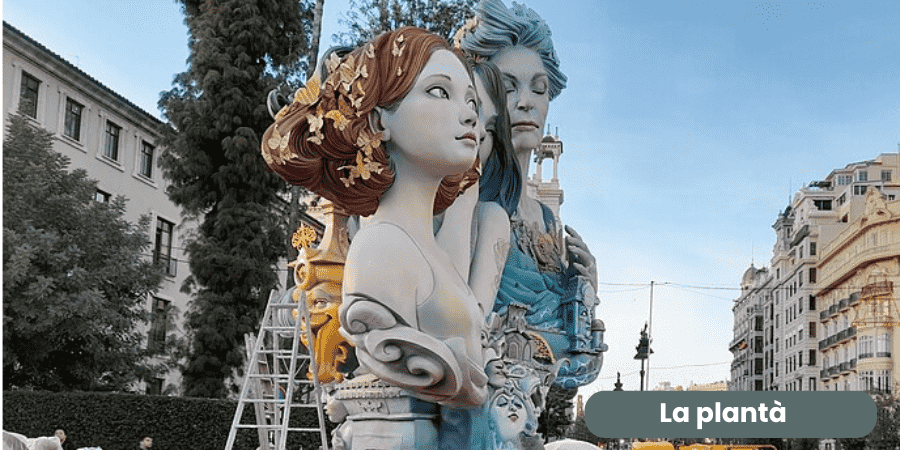
These monuments, created with incredible creativity, are placed around the city and represent a unique artistic vision that’s admired by locals and visitors alike. However, it’s not just about admiring these works; it’s about integration with the community and city.
The cremà, the final burning of these sculptures on March 19, marks a turning point in the festival. This fiery tradition symbolises the end of the festival but also the cycle of honor, creativity, and gratitude.
One of the most emotional moments of the festival is the floral offering to the Virgin of the Forsaken, or Virgen de los Desamparados, which takes place in Plaza de la Virgen. Falleros and falleras gather in processions to offer flowers to a giant wooden statue of the Virgin.
As the festival progresses, the statue is gradually covered in flowers which changes in design each year. This act of homage is a powerful symbol of respect and devotion that makes it one of the most moving traditions of Las Fallas.
Local Cuisine During Valencia’s Las Fallas Festival
The food in Valencia during Las Fallas is as much a part of the festival as the vibrant sculptures and fireworks. This city comes alive with a fiesta atmosphere, where the streets are filled with locals and visitors eating, drinking, and celebrating until the early hours of the morning. Bars, bakeries, and food stands line the streets which offer everything from pumpkin buñuelos to churros dunked in hot chocolate.Don’t forget the famous City of Arts and Sciences, a magnificent architectural complex that enhances the allure of the city.
- The buñuelos which is a small doughnut-like treats made with pumpkin, are deep-fried and served in a paper cone, often sprinkled with sugar. They’re the perfect snack for those looking to fuel their night of dancing, singing, and setting off firecrackers. But it’s not just sweet treats that define Las Fallas cuisine.
- Porras which are thicker and spongier than churros, are another popular snack. It is served with a cup of hot chocolate, that offers a slightly different texture and taste. Some locals swear by porras, claiming they are better than churros. You’ll find a variety of churros on offer, from simple to churros filled with chocolate, custard cream, or even dulce de leche. These are only available during the festival which adds to the sense of exclusivity that makes Las Fallas even more special.
- Then, of course, there’s paella Valenciana. While paella is famous worldwide, it originates from Valencia, and no celebration here is complete without it. During Las Fallas, you’ll see large paellas being prepared on the streets, with families and friends gathering around to cook and share a meal. Paella Valenciana typically includes chicken, rabbit, and sometimes snails. If you’re in the city during this time, don’t miss the opportunity to enjoy this iconic dish in its hometown.
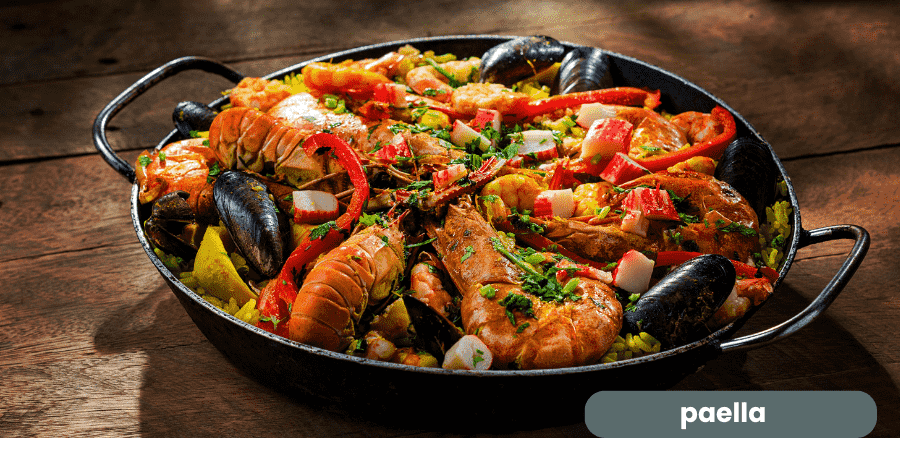
- Alongside paella, you’ll also find other rice dishes like arroz al horno (baked rice with pork, potatoes, and chickpeas), arroz del senyoret (a seafood rice dish), and arroz meloso con bogavante (creamy rice with lobster). These lesser-known rice dishes are just as delicious and give you a true taste of rich culinary heritage of Valencia.
Tips for First-Time Visitors
Valencia’s Las Fallas Festival that brings together thousands of visitors from across the globe which offers an exciting and lively experience that can be overwhelming for first-timers. The streets are filled with vibrant sculptures, exhilarating firework displays, and street processions that reflect the energy of the festival. To make the most of it, planning is essential for a smooth experience.
- When it comes to accommodation, Valencia gets busy, especially around the city center and Plaza del Ayuntamiento. Booking your stay in advance ensures you’re close to the main event areas. You’ll be doing a lot of walking, so comfortable footwear is a must. The weather in March can be mild during the day and chilly at night, so layers are recommended.
- A major highlight of the festival is the Mascletà, a daily firecracker display that is renowned for its deafening and intense sound. To fully enjoy the spectacle, it’s wise to bring earplugs or find a spot a little farther back to avoid the loudest blasts while still taking in the show.
- For those eager to experience the most popular moments like La Mascletà and La Cremà, arriving early is important. These events attract large crowds, especially on March 19, the final day of the festival. Arriving early ensures you have a great viewing spot and can fully enjoy the best experience.
- The culinary offerings at Las Fallas are a treat, with paella being the iconic dish of Valencia. Alongside this, you can savor regional favorites like buñuelos, and fried dough balls, and enjoy a refreshing glass of horchata, a sweet drink made from tiger nuts.
- Given the heavy traffic and road closures during the festival, public transportation is a convenient and stress-free way to get around. Buses and the metro are the most efficient, though staying within walking distance of the major attractions will save you time.
- It’s important to stay vigilant as pickpockets are common in crowded areas. Carrying a secure bag is a smart way to protect your belongings. Knowing a few basic Spanish phrases like “Hola” (Hello) and “Gracias” (Thank you) will also enhance your interactions with locals. Be sure to respect the local traditions, particularly during La Ofrenda, the offering of flowers to the Virgin Mary, and other religious and cultural events.
- The energy of the festival continues into the night, especially with events like fireworks and La Cremà. To make the most of the late-night energy, pace yourself during the day and enjoy the festivities from dusk to dawn. Staying mindful of safety guidelines around sculptures and fireworks displays ensures you have a safe and enjoyable time throughout the celebration.
Final Thoughts
Las Fallas is a celebration of Valencia’s rich culture, where art, tradition, and excitement come together in a one-of-a-kind experience. With vibrant parades, stunning sculptures, and unforgettable fireworks, it’s a festival that captures the heart of Spain. Don’t miss out on this incredible spectacle!
FAQs
- What are the Fallas?
Las Fallas is Valencia is one of the most celebrated festivals, recognized as an Intangible Cultural Heritage of Humanity by UNESCO. The festival revolves around the creation of sculptural monuments made of wood and papier-mâché that are displayed in the streets and squares before being burned. The festival includes children’s fallas, which are smaller in size and specially designed for little ones. The event has its origins in a tradition where people would make bonfires with old furniture to celebrate the arrival of spring, and it coincides with St. Joseph’s Day, the patron saint of carpenters.
- When are the Fallas held in Valencia?
The Fallas festival takes place in March, with the festivities starting on the last Sunday of February during the Crida, where the falleras mayors encourage people to join in the celebrations. The excitement grows through the Mascletà, a daily firework display held in City Hall Square which starts from March 1st. The main dates of the festival are from March 15th to 19th, when the plantà (setting up of the fallas) happens and culminates with the cremà (burning) of the fallas.
- What can you see at the Fallas in Valencia?
The highlight of Las Fallas is the hundreds of fallas spread across the city, each following a unique theme. These fallero monuments often include sculptures and sculptural groups known as ninots, which tell a story, sometimes poking fun at famous figures or commenting on current affairs with a dose of humor and satire.
On March 19th, the climax of the festival happens as the fallas are burned during the cremà. In addition to the fallas, there are firework displays, including the Nit del Foc (Night of Fire) on March 18th and the Flower Offering to Virgen de los Desamparados on March 17th and 18th. Visitors will also enjoy concerts, music, and parades throughout the city.
- How many Fallas are there in Valencia?
Around 800 fallas are set up throughout Valencia during the festival. Half of these are children’s fallas, which are smaller in size and designed with themes suitable for young audiences. The other half are part of the major commissions which showcase larger and more intricate designs.
- Where are the Fallas kept?
Before they are displayed in the streets and squares, the fallas are constructed in large warehouses which is mainly in the City del Artista Fallero. The ninots are installed during the plantà, with the children’s fallas available for public viewing starting on March 15th and the larger ones on the following day. Each year, a ninot from both the children’s fallas and the major fallas is pardoned through a popular vote and preserved in the Fallas Museum, along with other historical items that help explain the symbolism behind the festival.
- What is the mascletà in the Valencia Fallas?
The mascletà is a unique and exhilarating firework display that happens daily at 14:00 from March 1st to 19th in the City Hall square. These displays are known for their increasing intensity, with loud explosions that make the ground tremble. The rhythm and volume build progressively which fills the air with the smell of gunpowder and creating an unforgettable atmosphere. Some night-time mascletaes also take place, but it is the daytime event that truly defines the mascletà as an important part of Las Fallas.

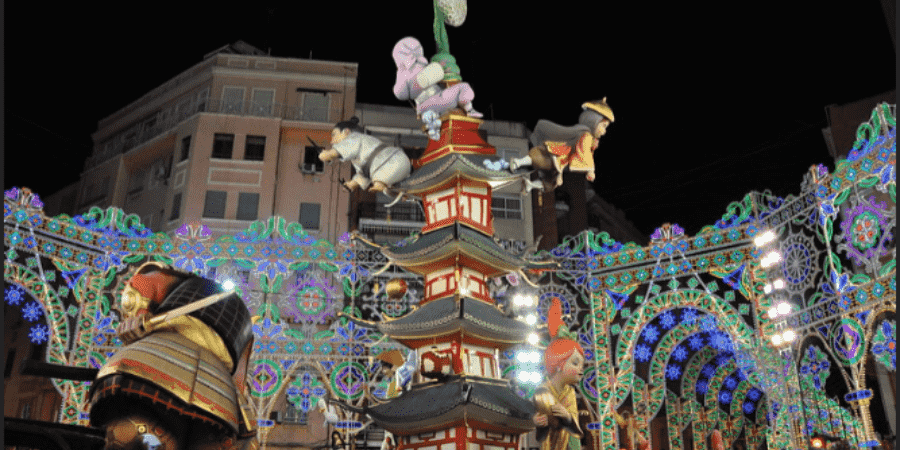
2 Responses
[…] Valencia’s Las Fallas Festival: What Makes It a Must-See? […]
[…] Valencia’s Las Fallas Festival: What Makes It a Must-See? […]